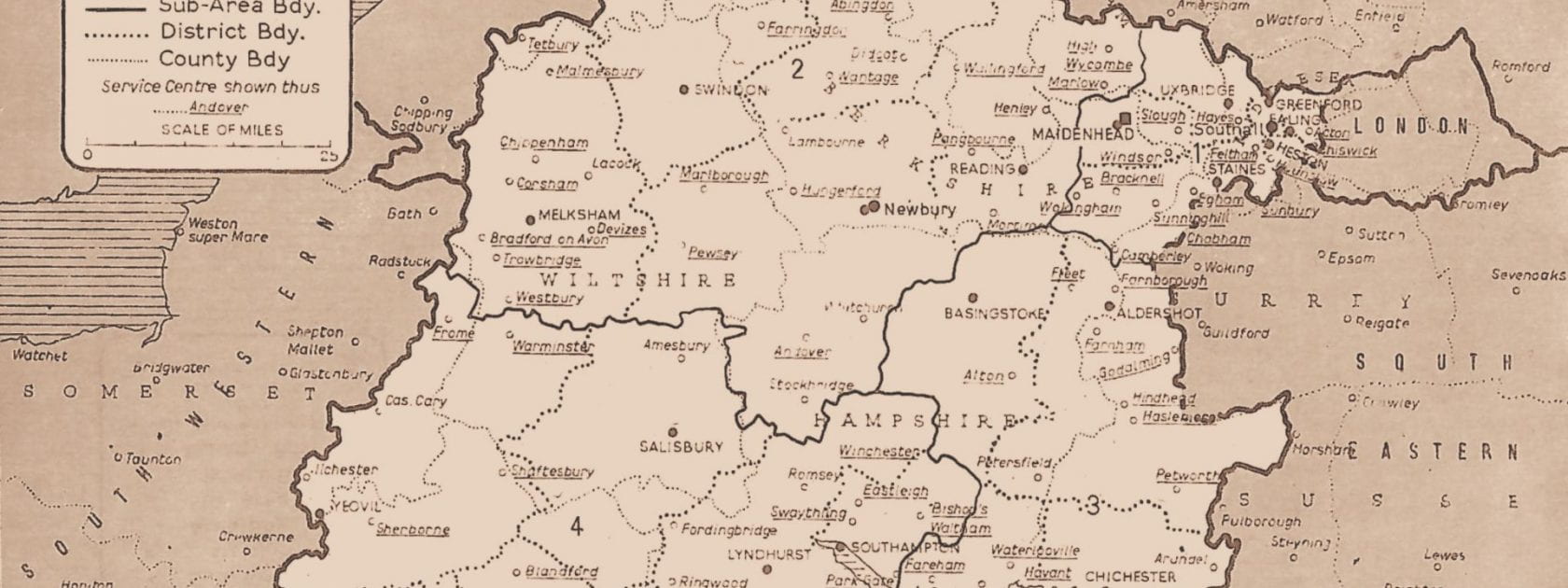The Southern Electricity Board Area
The area was first defined by the Ministry of Fuel and Power in a White Paper published in January 1947, a month before debate began on the Electricity Bill.[1] Fourteen area boards were to be established for electricity distribution or retailing. Generation and transmission were to be the responsibility of the British Electricity Authority.
Each area board was defined to provide a diversity of load between urban and rural areas and, where possible, avoided cutting across distribution networks. The Southern Area, as defined at this time, had been part of the South West England and South Wales Electricity Scheme Area since 1929. Other parts of this very large region were transferred to the South Western, Midlands and South Wales areas.
In detail the Southern Area included the whole of the counties of Berkshire, Hampshire, Isle of Wight, Wiltshire and parts of the counties of Buckinghamshire, Dorset, Gloucestershire, Middlesex, Oxfordshire, Somerset, Surrey and Sussex. The western and northern limits of Wessex Electricity shaped those parts of the boundary of the new Board area. Parts of the South Eastern Electricity Scheme area in Middlesex and Surrey were added to increase the urbanised zone of the SEB. The boundary lines drawn in 1947 continue to be entrenched in the distribution franchise area of the present day.
[1] Ministry of Fuel and Power, Electricity Supply Areas, Cmd 7007. (London: HMSO, 1947).


